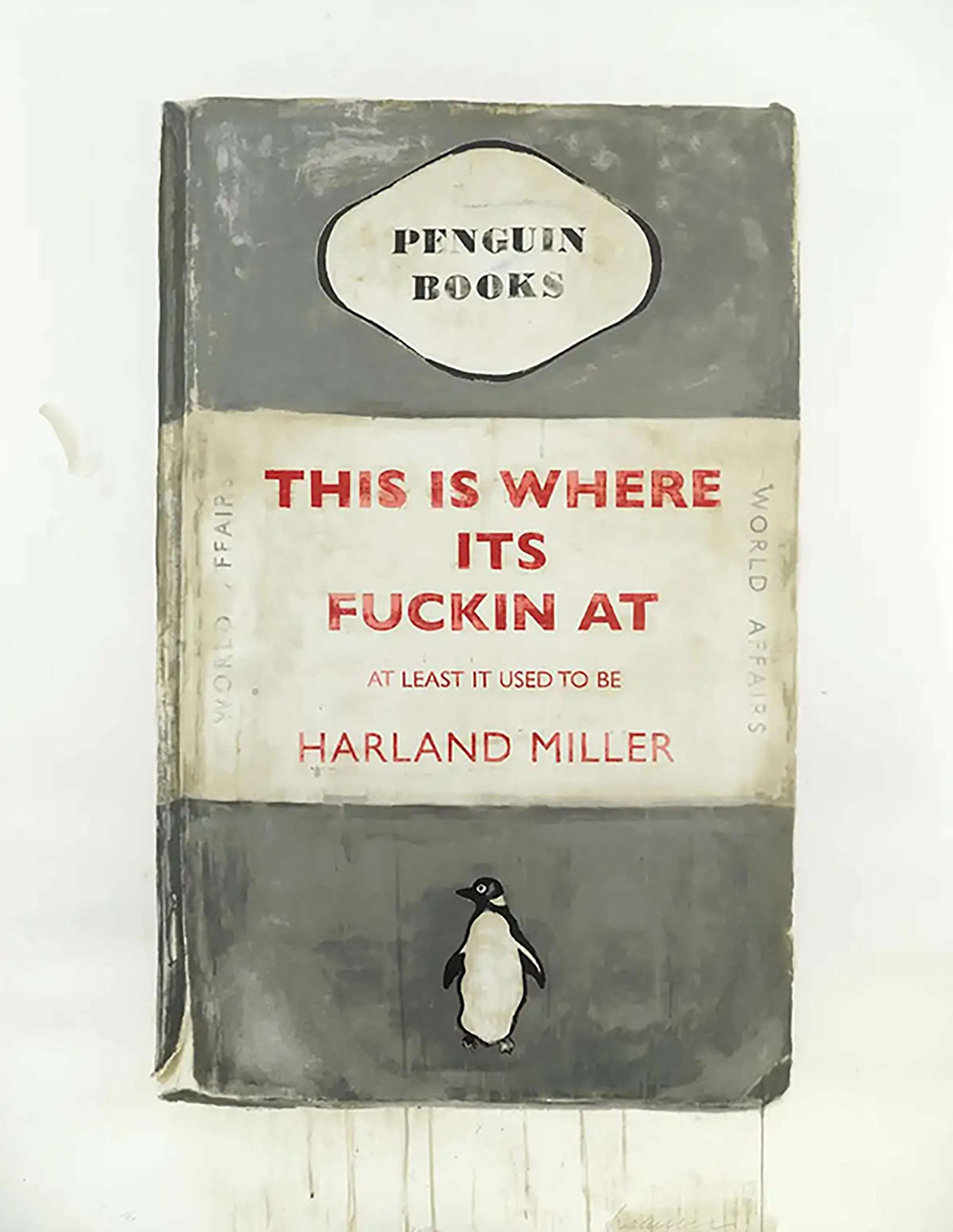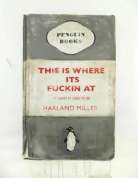
This Is Where It’s Fuckin At

This Is Where It’s Fuckin At
Signed Print
Harland Miller
£35,000-£50,000
$70,000-$100,000 Value Indicator
$60,000-$90,000 Value Indicator
¥330,000-¥470,000 Value Indicator
€40,000-€60,000 Value Indicator
$360,000-$520,000 Value Indicator
¥7,270,000-¥10,380,000 Value Indicator
$45,000-$70,000 Value Indicator
There aren't enough data points on this work for a comprehensive result. Please speak to a specialist by making an enquiry.
143 x 110cm, Edition of 50, Screenprint
Auction Results

Track auction value trend
Meaning & Analysis
This Is Where It’s Fucking At was produced in a series of 50 in 2012. Miller’s mastery of combining text and imagery, within the context of colour plains is inspired by the work of American pop artist, Ed Ruscha, whose work Miller encountered whilst working in New York and New Orleans during the 1980s and ’90s. After Miller’s graduation from the Chelsea School of Art in 1988, he travelled throughout Europe and the United States, such experiences informing his career in later years.
Like Ruscha, Miller is an artist who works in an abstract medium, but deals with subject matter. Text within the context results in a different reading of art - rather than searching for the symbolism in a painting, the viewer is confronted with it, forced to interpret it. Miller uses this practice for exactly that - to leave his art open to interpretation. Rather than take it at face value and question the artist’s intentions, This is Where It’s Fucking At provokes the viewer to question their own reaction to the piece. The artist himself commented that people used to ask, “What does it mean? What does your work mean? Now I find that people tell me what it means to them.”
The influence for such quintessentially English book covers stems from his childhood in the North-East, crediting his father with his exposure to the books. His father’s sporadic collecting of Penguin books meant Miller could never be sure what paperbacks he would bring home from the Leeds’ salesrooms. Whilst his father was primarily searching for a priceless first edition, Miller routinely organised the classics into sections dependent on their imagery, attributing his contact with both lowbrow and highbrow novels to his later career as he continues to experiment with the fusion of the two. The artist continued to acquire Penguin paperbacks when he left Yorkshire, even in Paris he regularly came across them in second hand shops. His original titles developed from the depths of these second hand shops. Struggling to understand if the title of these French novels appealed to him, Miller began to invent his own titles, claiming it to be an awakening moment in his career, “I invented a text that suggested a story – a whole narrative – which suggested the way in which I should paint the painting. I found that it seemed to be more interesting than what I’d been doing before.”